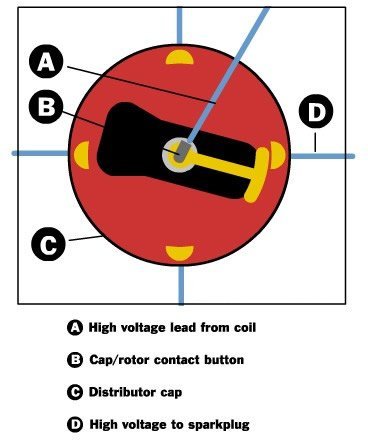An ignition system is for igniting a fuel-air mixture. It is best known in the field of internal combustion engines
A distributor is a device in the ignition system of an internal combustion engine that routes high voltage from the ignition coil to the spark plugs in the correct firing order.
Typical Ignition System (DIS) Distributorless Ignition System Spark Plugs Coil Distributor Testing with a Multi-meter
Typical Ignition Distributor : Distributes the high voltage spark provided by the ignition coil to the spark plugs.A distributor consists of a rotating arm or rotor inside the distributor cap, on top of the distributor shaft, but insulated from it and the body of the vehicle ("earth"). The distributor shaft is driven by a gear on the camshaft. (Usually the distributor shaft extends to also drive the oil pump.) The metal part of the rotor contacts the central high voltage cable from the coil via a spring loaded carbon brush. The metal part of the rotor arm passes close to (but does not touch) the output contacts which connect via high tension cables to the spark plug of each cylinder. As the rotor spins within the distributor, electrical current is able to jump the small gaps created between the rotor arm and the contacts due to the high voltage created by the ignition coil.
The distributor shaft has a cam that operates the contact breaker. Opening the points causes a high induction voltage in the system's ignition coil.
The distributor also houses the centrifugal advance unit: a set of hinged weights attached to the distributor shaft, that cause the breaker points mounting plate to slightly rotate and advance the spark timing with higher engine rpm. In addition, the distributor has a vacuum advance unit that advances the timing even further as a function of the vacuum in the inlet manifold.








